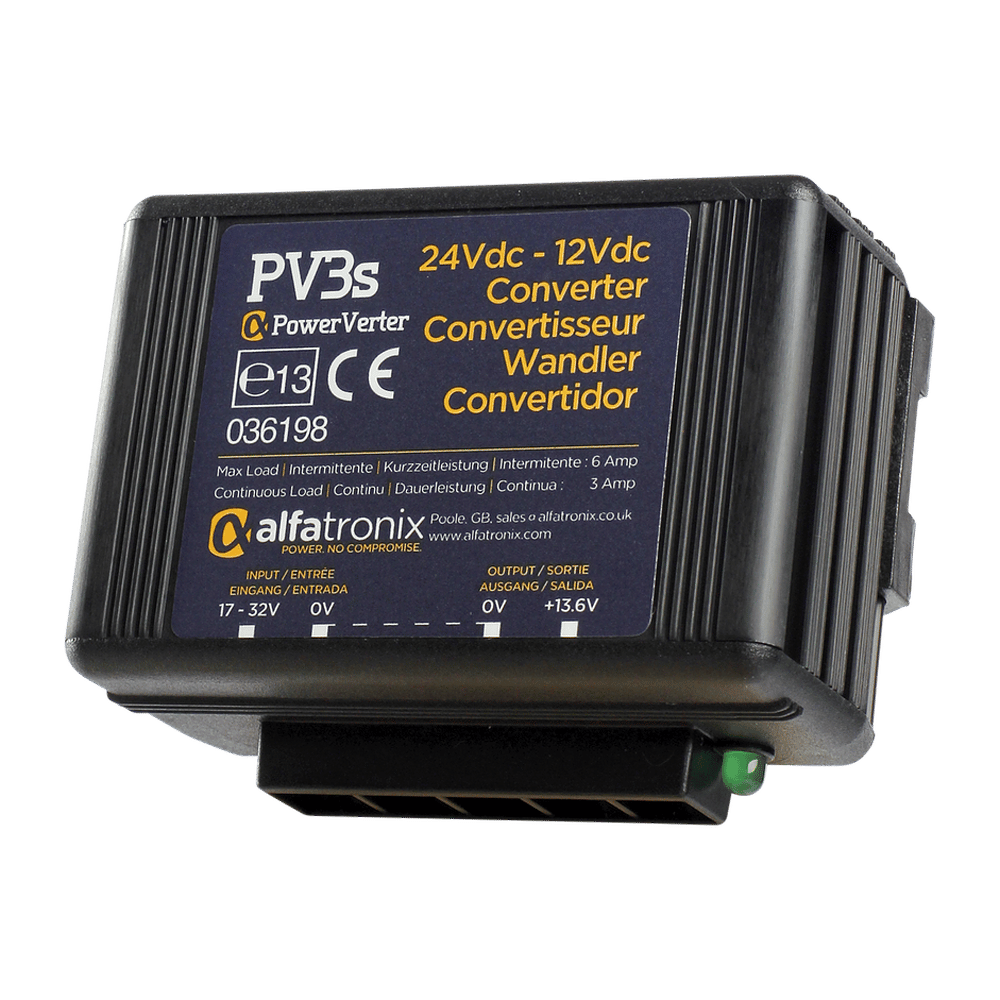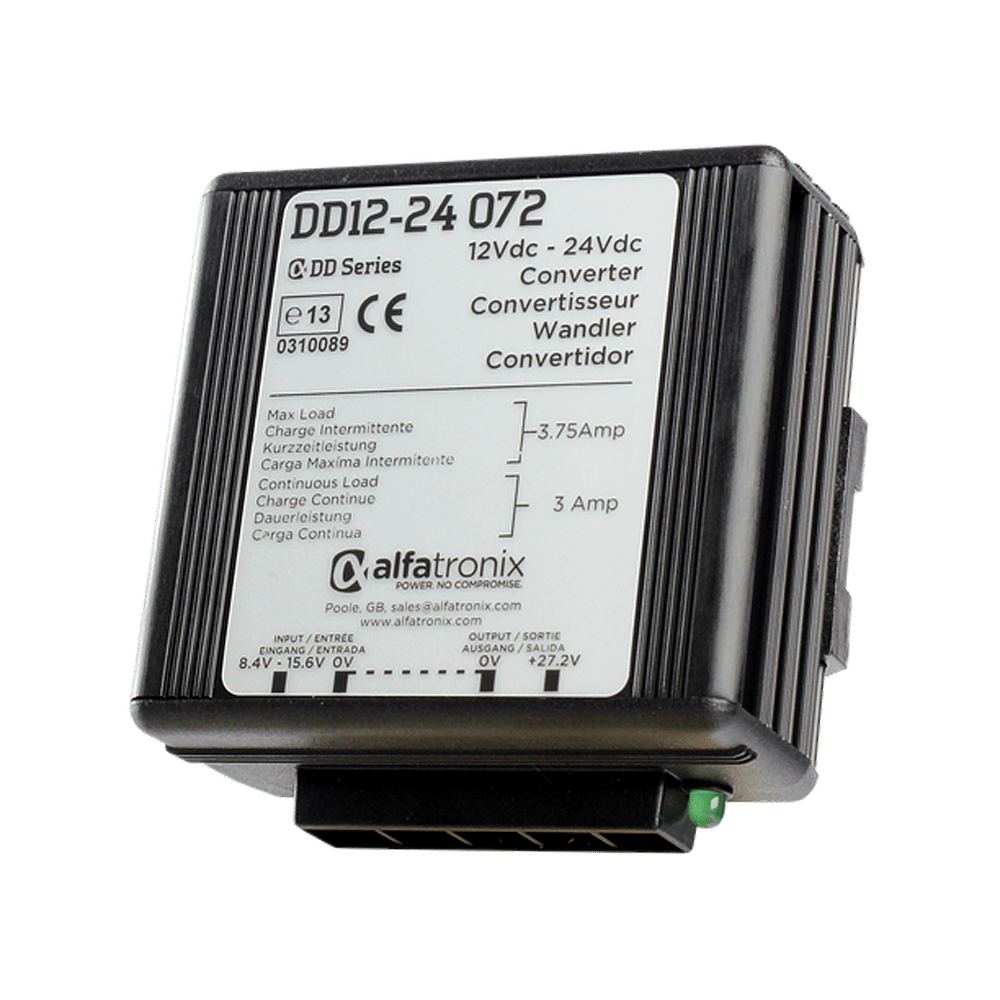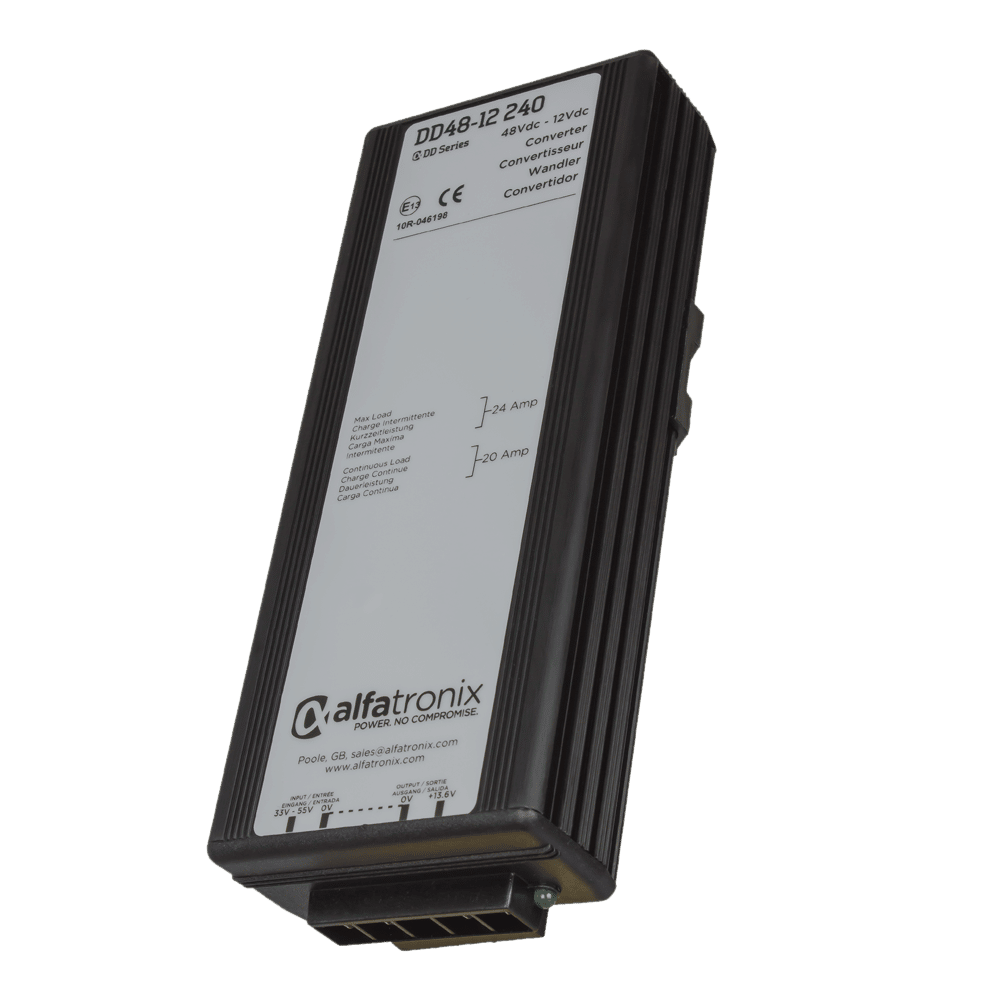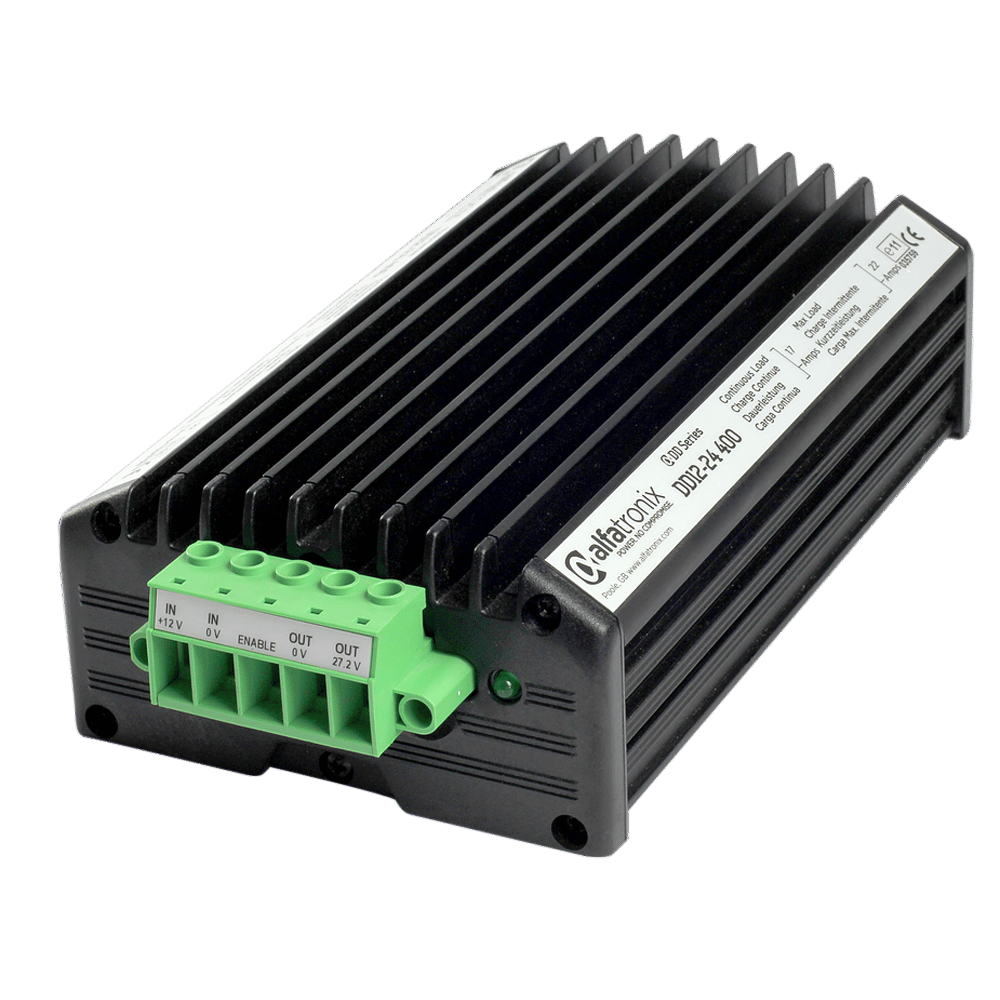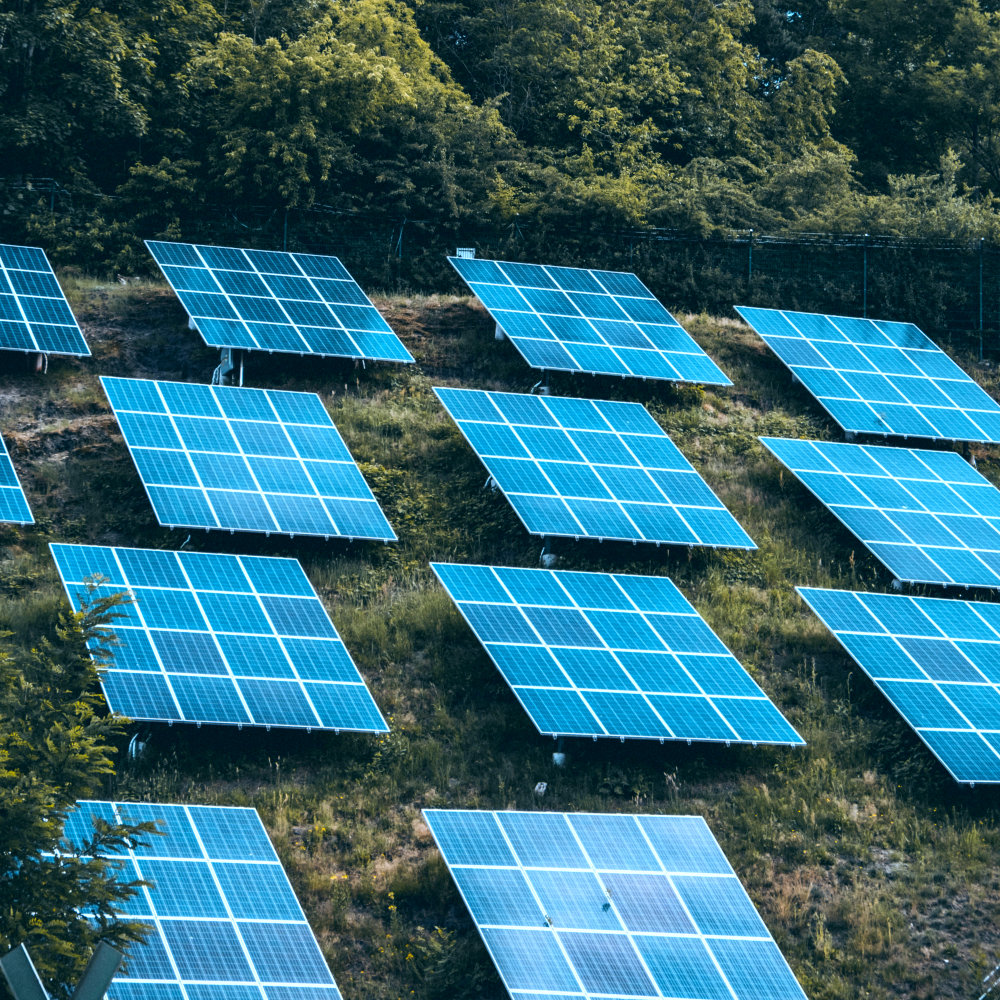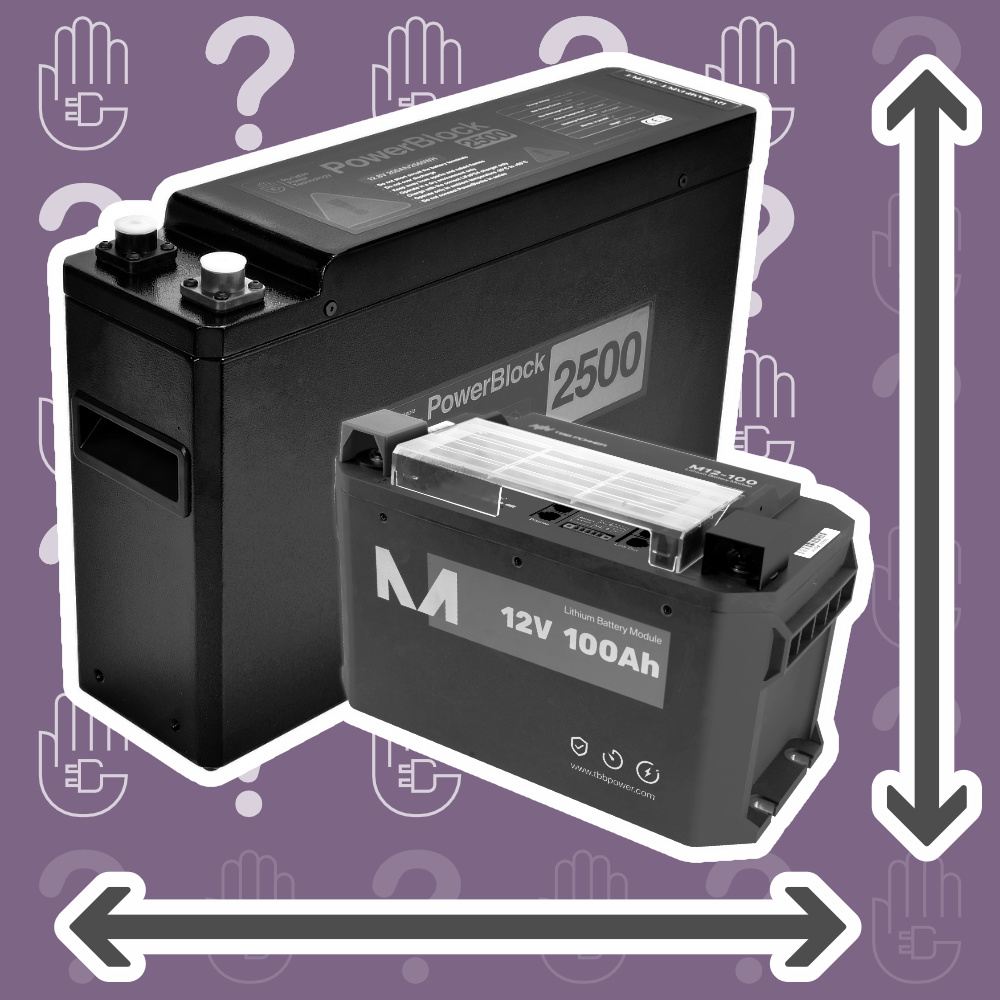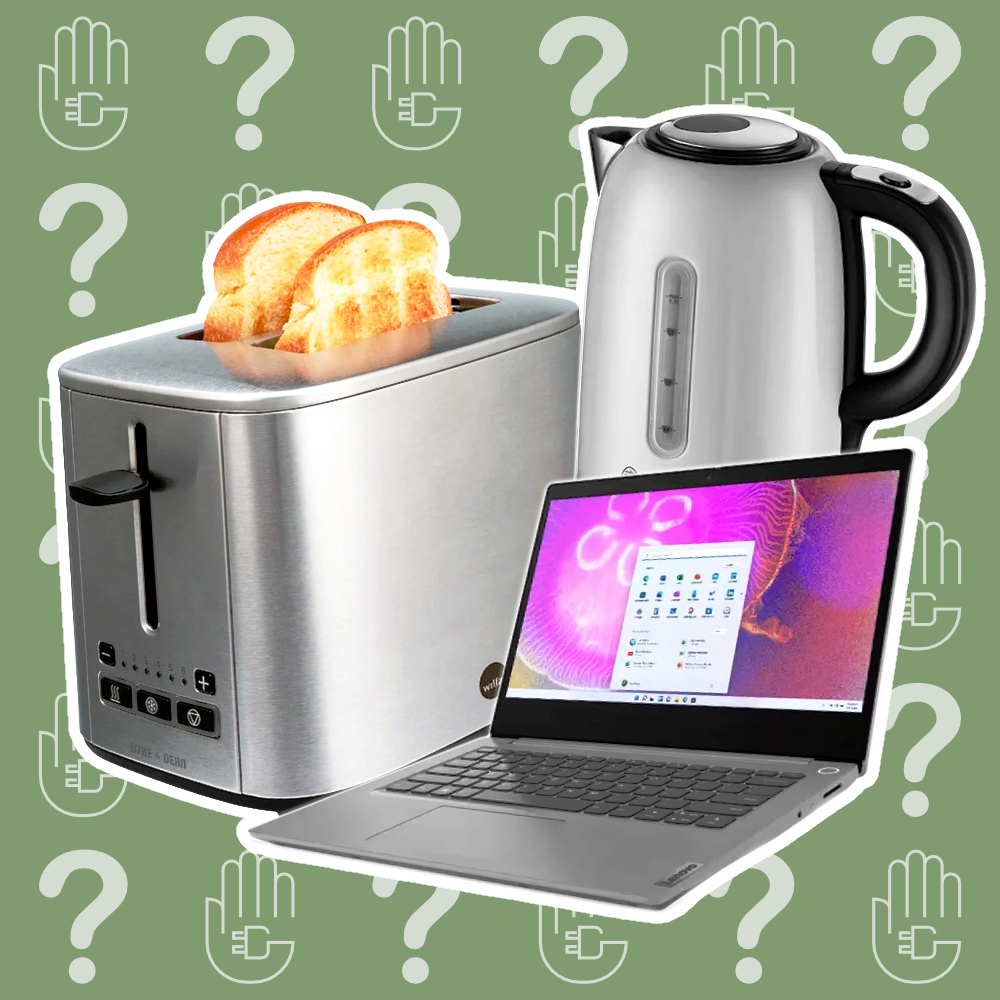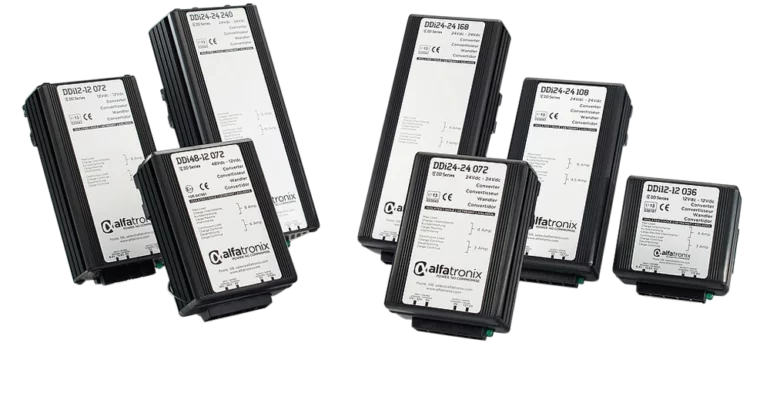
Where do I need a DC-DC converter?
A DC-DC power converter is a device that converts direct current (DC) from a source to another voltage level. The most common application of DC-DC converters is in small electronic devices, such as cell phones and laptop computers, where they are used to convert the voltage supplied by batteries to the lower voltages required by their circuitry.
DC power converters come in all sorts of sizes and are needed for various applications, including:
- Voltage level conversion: DC power converters are used to convert DC voltage levels from one level to another, such as stepping up or stepping down the voltage such as running 12V devices from a 24V starter battery.
- Power supply regulation: DC power converters are used to regulate the output voltage and current of power supplies for electronic devices like servers and radio transmitting equipment.
- DC Charging: DC-USB converters can be used to recharge electronic devices, such as mobiles and tablets.
Types of DC Power Converters
There are several types of DC power converters, typically reffered to by specific terminology, based on what kind of conversion the device provides;
Buck converter:
A buck converter is a step-down DC converter that produces a lower voltage than the input voltage. (24V-12V)
Boost converter:
A boost converter is a step-up DC converter that produces a higher voltage than the input voltage. (12V-24V)
Buck-boost converter:
A buck-boost converter can produce an output voltage that is either higher or lower than the input voltage. (12V-24V & 24V-12V)
Flyback converter:
A flyback converter is a transformer-based converter that produces multiple output voltages.
Popular DC-DC Converters
What DC Converter do I need?
Correctly specifying a DC-DC converter for your application is essential to ensure optimal performance and reliability. To do so, you will need to consider several factors, including the input and output voltage and current requirements, power output, efficiency, and size.
The first step in selecting a DC-DC converter is to determine the input /output voltage and current requirements of your application. You should ensure that the converter's input voltage range is compatible with your DC power source, and that the output voltage and current rating can meet your load requirements.
Determining the desired output voltage is easy as all appliances will clearly state what level of DC input they require. Working out exactly how many Amps you'll need is a little trickier, but just as important.
Any device you want to use should specify its power consumption or draw in Amps (A). This means it will want to draw this many Amps from the DC-DC converter. If you have multiple devices you wish to run from the same converter, you'll have to add the sum of all the individual power draws to get your total current requirement. Once you have this, you just need to ensure that your DC-DC converter is rated higher than this and you'll be good to go.
Practical Example
Lets say I wanted to run 12V lighting within my 24V based vehicle.
I know I need a 24V-12V DC converter in order to power my 3x 12V LED strips.
Each LED strip has a max power draw of 1A @ 12V.
Since I want to run all 3 LED strips from the same converter, my total current draw would be 3A.
That means that I need a 24V-12V converter rated at 3A or more.
To be on the safe side, I'd pick one that could offer a little more than 3A, so this PV6S by Alfatronix is the perfect solution.
How Does a DC Power Converter Work?
A DC power converter will take in a DC supply (typically 12V or 24V) and convert the voltage level up or down so that it can be used by devices that require specific DC voltages. They can also regulate DC current, meaning you could have a 12V-12V DC converter; This will work to reactively convert the fluctuating 12VDC input up or down to ensure the 12VDC output is consistent.
Inside a DC converter, there are electronic components, such as semiconductor switches, energy storage components, and control circuitry. These components work together to convert DC voltage levels from one level or form to another.
When DC power is inputted into the converter, it passes through a semiconductor switch, which acts as an on/off switch, to connect and disconnect the input and output sides of the converter. This switching process is controlled by a control circuit that regulates the duty cycle of the switch. By varying the duty cycle of the switch, the average voltage and current at the output can be regulated. This means that the output voltage can be either higher or lower than the input voltage, depending on the type of converter used.
Alfatronix UK is a leading DC-DC converter manufacturer based in the United Kingdom, with over 35 years of experience in the industry. Their expertise in power electronics has allowed them to design and develop a range of high-quality DC-DC converters for various applications, including mobile and marine industries. To find out more about their DC-DC Power converters, please visit their website.
What is the difference between isolated and non-isolated?
When it comes to DC applicaitons, most 12V devices will share a common ground. Therefore you would expect DC-DC converters to work in the same way. This is true for non-isolated DC-DC converters as both the input and output will be connected to the same shared grounding (negative channel). Since you will always connect
Isolated DC-DC converters are slightly different. They allow for total isolation between the input and the output, meaning you will have 2 completely independant circuits. This is useful if you have sensitive DC loads or systems that require accurate monitoring. Essentially isolated DC-DC converters grant you the ability to keep the input and output completely seperated.
Most applications will not require the use of an isolated DC-DC converter and work perfectly with an non-isolated converter.
Is a DC-DC converter an inverter?
No. There are several types of DC power converters, some can also be used to convert DC power into AC power. However, these are often called inverters instead of DC-DC converters because they output AC power and not change DC levels. You can think of a power inverter as a DC-AC converter as it will output AC power. For the devices mentioned in this article, the term DC-DC covnverter is correct because they output DC current. If you want to learn more about AC Power Inverters you can check out this article below.
DC power converters are essential devices for sophisticated electronic-based applications, providing voltage level conversion, power supply regulation, and lightweight versitility. By understanding the working principles and types of DC power converters, we can better design and implement power electronics systems that meet our needs.
If you have any questions regarding DC-DC converters or other technical related queries, please get in touch.
Our friendly team of off-grid power specialists are guaranteed to be helpful, nonmatter the application.
